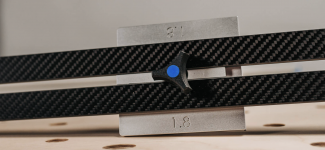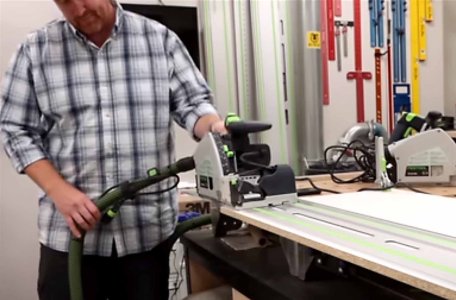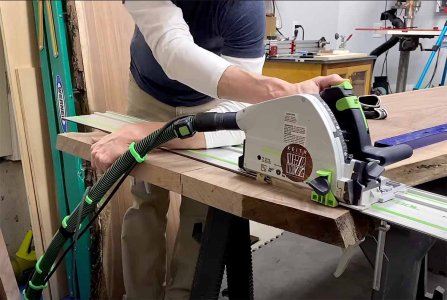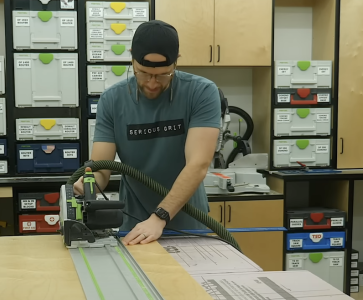If you stand on the other side of cut than where the rail is... you reach "over" the blade. Regardless of going one way or from the other side with a left handed saw.
Two points:
1) Then it's completely irrelevant to the topic of this thread, which if left-handed vs right-handed track saw design.
2) If you look at people using tracksaws, there's nothing awkward or dangerous about using a tracksaw from the off-cut side of the blade. I'd call "reaching over the blade" a reach of hyperbole. There's a full blade guard above the work, and the grip is behind the blade. Bent does not look awkward in the photo above, and I could include photos of Sedge and numerous other people using their left hand that also do not look awkward nor dangerous. Millard's crossing of his arms, however, does look very awkward and maybe a tad dangerous.
OTOH, putting the workpiece on a foam board on the floor and then sitting on top of the board to make the cut (I assume even
@Allano isn't sitting on a board on a workbench) is something people are sometimes "forced" to do when both keeper and off-cut pieces are too wide to easily reach-over (and again lefty vs righty doesn't come into play here). The kind of scooting one has to do while cutting is awkward and maybe even a bit dangerous.
If one of the two pieces on a rip (eg long cut) isn't too wide, then most opt for cutting it on a workbench, where they can stand next to the piece. In that case, the rail is mounted to the keeper piece, or if that's too narrow to support the rail, to the wider of the two pieces. And then we have the ripping situation I'm talking about and showing here (see Bent, above).
For cross-cuts, the same lefty-right dichotomy holds true. With the rail mounted on the (typically wider) keeper piece of these lefty tracksaws, you're reaching over more to complete the cut than if you're a lefty and stand on the narrower off-cut side. See the Dashboard video I linked above.







